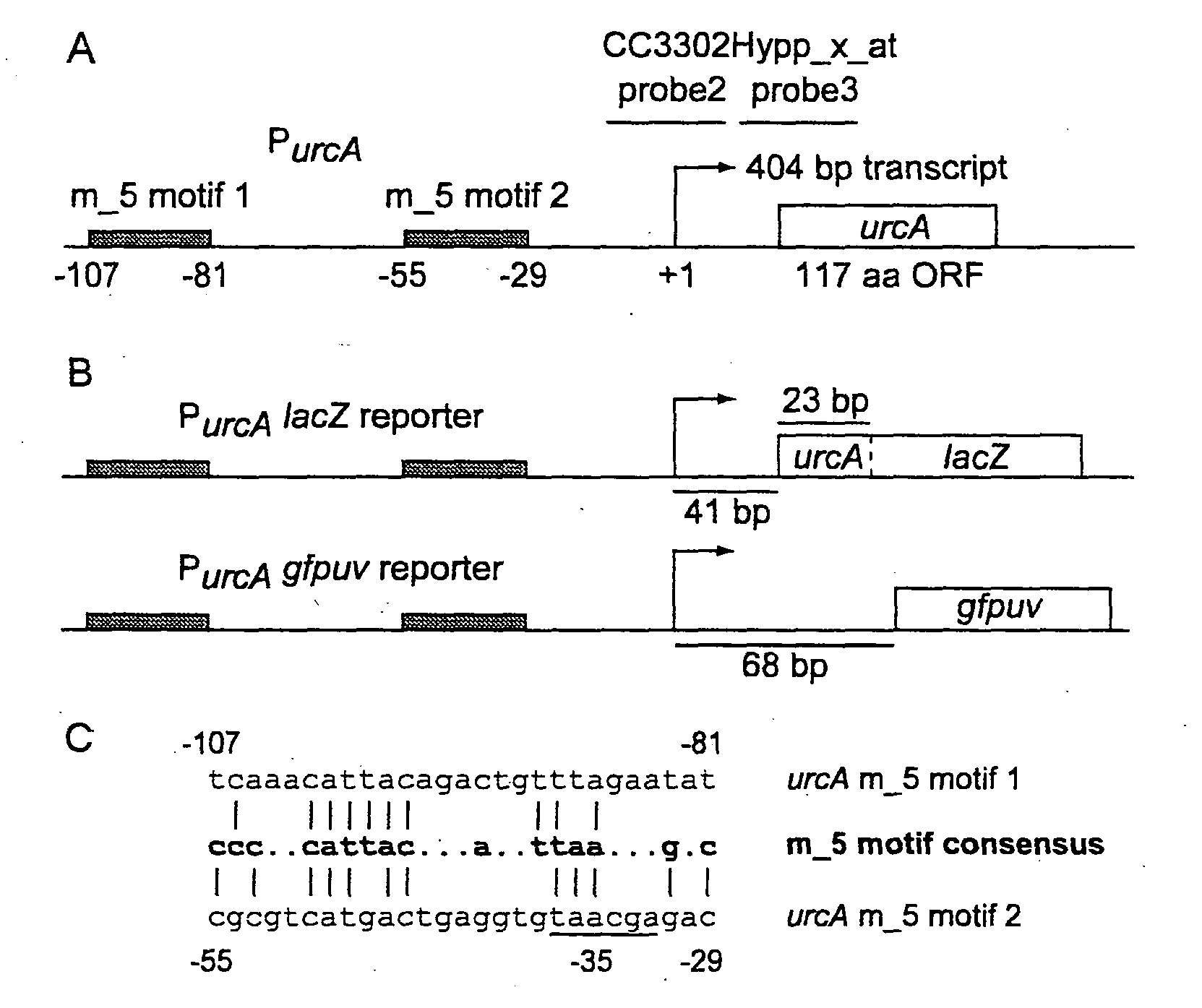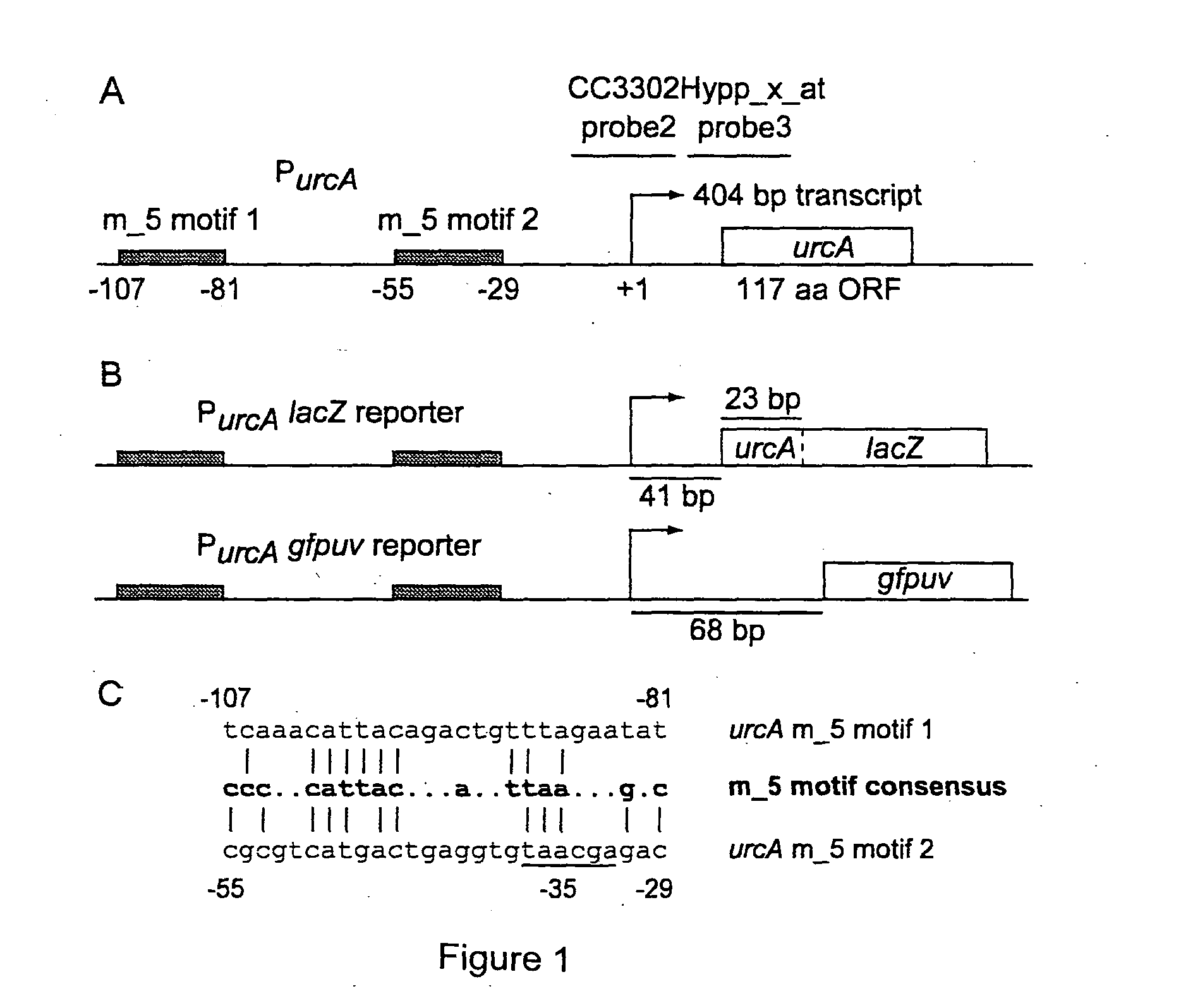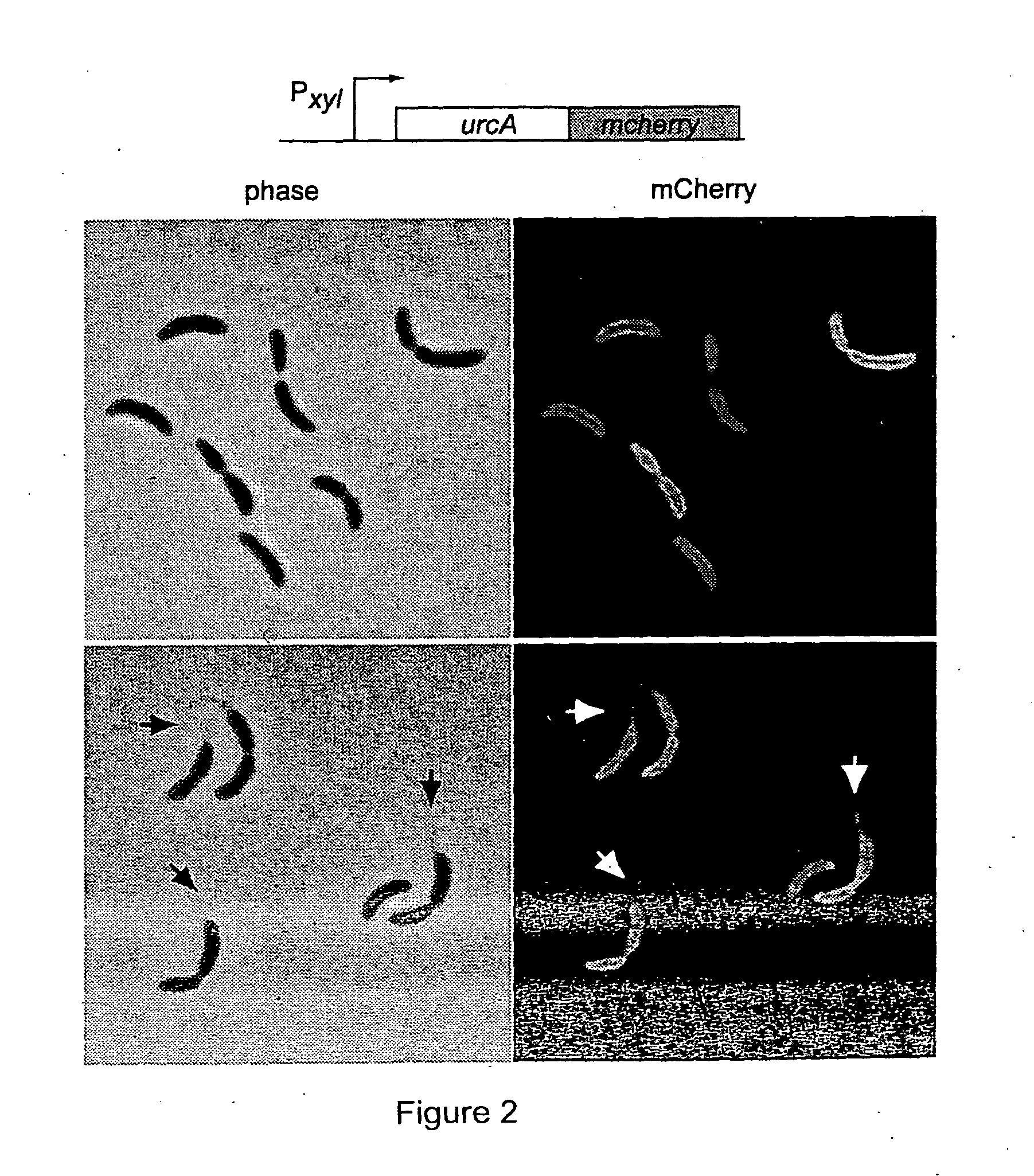Heavy Metal Biosensor
a biosensor and heavy metal technology, applied in biochemistry apparatus and processes, peptides, microorganisms, etc., can solve the problems of heavy metals, heavy metals are difficult to fully understand, and human health risks are high, and achieve the effect of being easy to s
- Summary
- Abstract
- Description
- Claims
- Application Information
AI Technical Summary
Benefits of technology
Problems solved by technology
Method used
Image
Examples
Embodiment Construction
[0020]Compositions and methods are provided for the biological detection of heavy metals with a biosensor organism comprising at least one heavy metal responsive element, which comprises a polynucleotide sequence encoding a fluorescent reporter protein operably linked to a promoter sequence that is active in presence of these heavy metals, and inactive in its absence. Vectors of interest include plasmids, viruses capable of expression in bacterial cells, and the like. The biosensor organism becomes fluorescent in the presence of one or more of cadmium, chromate, dichromate, plutonium and uranium. The promoter of the heavy metal responsive element may be a promoter sequence of a heavy metal responsive protein of a Caulobacter species, e.g. Caulobacter crescentus CC3302, CC1777; CC3500; CC1532; and CC3291, or a homolog or variant thereof.
[0021]Unless defined otherwise, all technical and scientific terms used herein have the same meaning as commonly understood by one of ordinary skill ...
PUM
| Property | Measurement | Unit |
|---|---|---|
| density | aaaaa | aaaaa |
| temperature | aaaaa | aaaaa |
| extension time | aaaaa | aaaaa |
Abstract
Description
Claims
Application Information
 Login to View More
Login to View More - R&D
- Intellectual Property
- Life Sciences
- Materials
- Tech Scout
- Unparalleled Data Quality
- Higher Quality Content
- 60% Fewer Hallucinations
Browse by: Latest US Patents, China's latest patents, Technical Efficacy Thesaurus, Application Domain, Technology Topic, Popular Technical Reports.
© 2025 PatSnap. All rights reserved.Legal|Privacy policy|Modern Slavery Act Transparency Statement|Sitemap|About US| Contact US: help@patsnap.com



